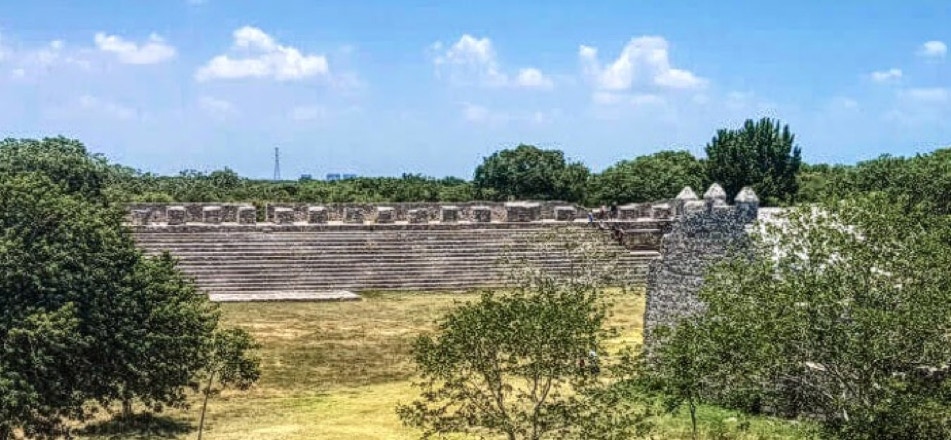
9. STRUCTURE 44, DZIBILCHALTUN (14th CENTURY) Opposite structure 36, across the Central Plaza is another building with a counterpart at Edzna, the Honoch-Nah or "Big House" built in 464. Like it, Structure 44 consists of a broad flight of steps with the piers of a suite of rooms running along its top; their vaults have also collapsed or the roof may originally have been made of thatch. Like the Honoch-Nah, these chambers would have been used as offices for public business at Dzibilchaltun. Similarly, its steps could have functioned as seating for rituals conducted in the Central Plaza which this photo looks across from Structure 36. That the plaza was used for spectacles is further suggested by the small stone building in the foreground. This was an open-air altar built by the Franciscan missionaries, soon after the conquest, where the Mayans of the town could see the mystery of transubstantiation of the new religion, Christianity, performed. Such informal churches for large audiences were common in the Yucatan during the rapid conversion of the Amerindians from their centuries' old beliefs to Catholicism. The Spanish saw this as an urgent task both for the salvation and subjugation of their new subjects, The Mayans syncretized the new religion with the old so the priests were often unsure who was being worshipped - neither, probably could the Maya. Oddly both the new and traditional religions were centered on gods who died to redeem humanity but who required parallel sacrifices of the faithful. The Conquest devastated a civilization already in long-term decline (at least since the abandonment of Uxmal and Chichen Itza in the first half of the 10th Century. making conversion more attractive. During the first hundred year "contact period" between Mesoamerica and Europe, it is estimated that the indigenous population declined from 11 million to 1.5 million largely through pandemics of everyday diseases in the Eastern Hemisphere for which the Maya had no immunity. This must have been at least as demoralizing as the Conquistadors' exploitation of an already subject population.